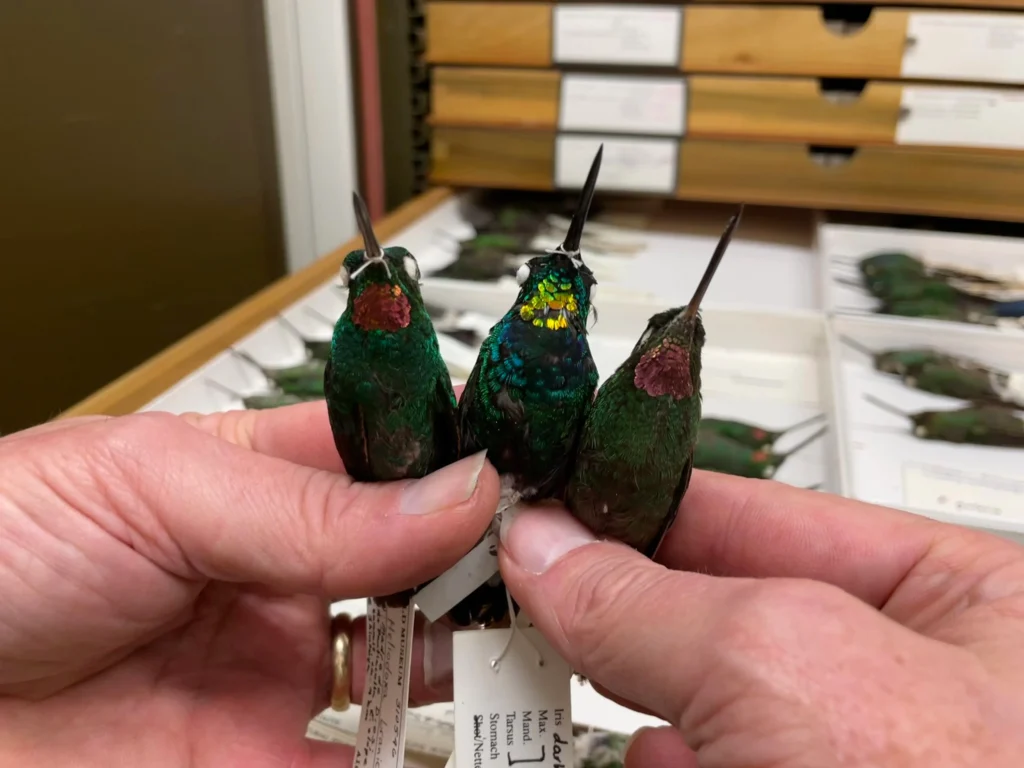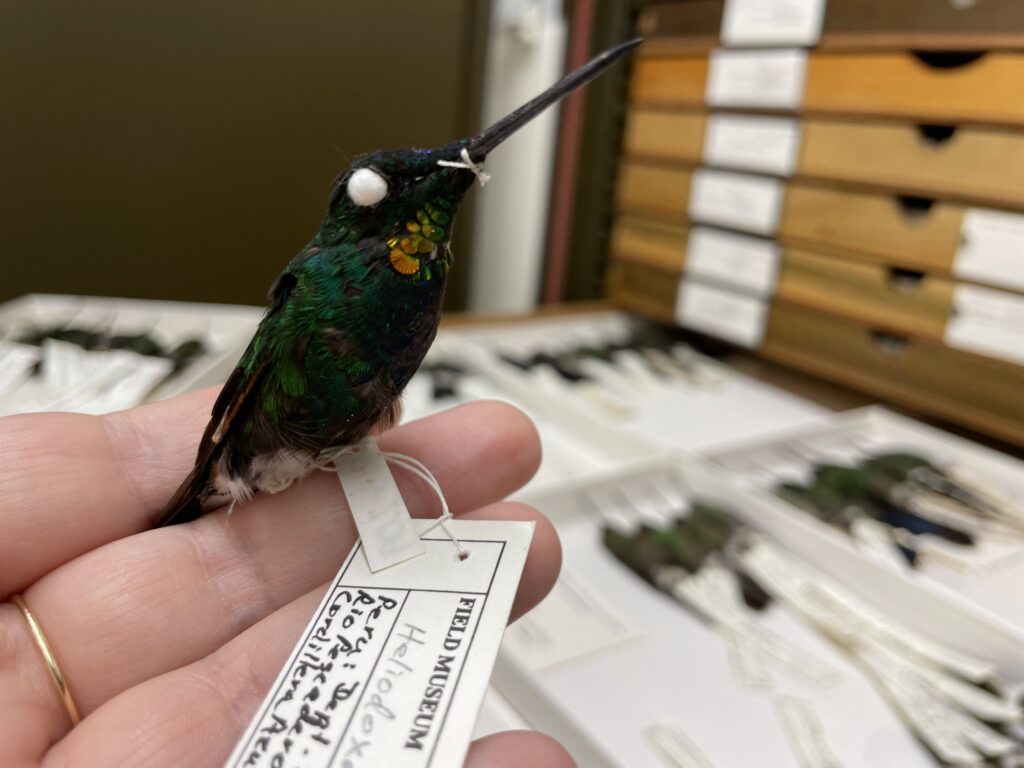Newsmatro

CORDILLERA AZUL NATIONAL PARK, Peru – In a remarkable find, scientists stumbled upon a never-before-documented hybrid hummingbird displaying captivating gold feathers in Cordillera Azul National Park, nestled in the Peruvian Andes. Initially perceived as a potential new species, this avian enigma has turned out to be an extraordinary hybrid, bridging two distinct species native to western South America: the Pink-throated Brilliant hummingbird (Heliodoxa gularis) and the Rufous-webbed Brilliant hummingbird (Heliodoxa branickii).
Published earlier this year in the journal Royal Society Open Science, this discovery has ignited curiosity about the phenomenon of hybridization in hummingbirds.
Ordinarily, hummingbird species maintain genetic isolation and rarely interbreed with one another. However, as this remarkable hybrid illustrates, exceptions to this rule can confound researchers. The frequency of hummingbird hybrids remains unknown, yet they could play a pivotal role in the evolution of vibrant colors among these avian creatures.
While both the Pink-throated Brilliant hummingbird and the Rufous-webbed Brilliant hummingbird sport vibrant pink throats, scientists sought to unravel how their combination resulted in a hummingbird adorned with a resplendent gold throat. Within the hummingbird family, it is uncommon for members of the same species to exhibit such strikingly different throat colors, which perplexed researchers when the birds’ DNA matched.
In the words of John Bates, the senior author of the study and curator of birds at Field Museum, “I looked at the bird and said to myself, ‘This thing doesn’t look like anything else.’ My first thought was, it was a new species.”

The mysterious origins of this unusual bird can be traced to the intricate mechanisms underlying iridescent feather colors, elucidated by the Field Museum. Unlike standard feathers, hummingbirds’ iridescent feathers derive their color not from pigments like melanin or carotenoids, but rather from structural characteristics. This structural coloration relies on the bending and filtering of light as it interacts with micro- or nano-structures on the feathers, giving rise to color-shifting iridescence.
Chad Eliason, a senior research scientist at the Field Museum, likened the process to cooking, explaining, “It’s a little like cooking: if you mix salt and water, you kind of know what you’re gonna get, but mixing two complex recipes together might give more unpredictable results.”
In the case of this hybrid hummingbird, its iridescent glory is a consequence of merging the complex structural recipes from its two parent species. This unique find has illuminated the captivating interplay of genetics, structural biology, and avian evolution, posing intriguing questions about the hybridization of hummingbirds and the evolution of their enchanting colors.